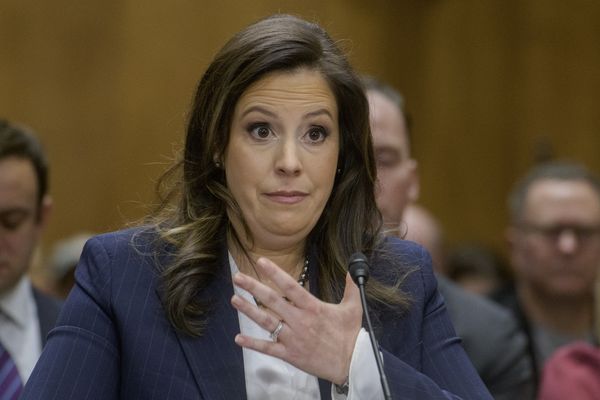
Last week, Peter Dutton announced the Coalition’s new housing policy: a $5 billion fund for “enabling” infrastructure to unlock new developments, such as roads and pipes to greenfield sites.
Where will these infrastructure projects and homes be built? Shadow housing minister Michael Sukkar has a “strong preference” for building in “new areas” — outer suburbs and the regions. According to the ABC, Coalition strategists are “seek[ing] to strike a sharp contrast against federal government plans for more social and higher-density housing in the nation’s most expensive cities”.
“I think it’s a bit of a fad amongst policymakers at the moment that Australians should only have the choice, in the future, of purchasing an apartment,” Sukkar told The Saturday Paper. (Note: literally no one is proposing apartments should be the only choice.)
Meanwhile in Victoria, Jacinta Allan’s government has moved in the opposite direction, promising to upzone 50 areas (25 locations confirmed) adjacent to transport hubs in inner Melbourne suburbs like Brighton and Footscray. A contingent of “concerned locals” (read: NIMBYs) and Liberal politicians descended on Brighton’s Half Moon Hotel to protest the premier’s announcement.
The upshot is clear: Labor wants to build up, while the Coalition wants to build out.
Your kids are moving out — to the land of Far, Far Away
Some, such as Senator David Pocock, have rightly criticised the Coalition’s policy from an environmental perspective for freezing environmentally friendly building standards.
My principal concern, however, is generational and geographic — and born from personal experience. My friends and I, mostly young Millennials or older Gen Zs, have mostly chosen to spend our 20s renting in suburbs near where we grew up (Melbourne’s north-east) or to move closer to our centrally-located workplaces. But as we approach 30, some, tired of the constant moving and second-class citizenship of renting, are looking to buy properties, and to upgrade to roomier places ahead of potentially starting families.
They are almost invariably disappointed. Due to a dearth of affordable, family-friendly housing options in inner suburbs that aren’t already occupied by older people, many young people are forced to move further away from where they grew up, toward the peri-urban fringes. The Coalition’s urban vision entrenches and accelerates such stratification by prioritising more urban sprawl over infill projects.
It is enormously expensive and unsustainable to keep expanding the peripheries of our cities. Flora and fauna must be cleared. New schools, hospitals and public transport lines must be built, at a much higher cost than upgrading existing ones — as Labor’s housing minister Clare O’Neil points out, the Coalition’s fund won’t support such vital social infrastructure. As public transport projects usually lag behind the building of new estates, the new residents become particularly car-dependent, which increases congestion, commute times and emissions.
But perhaps the most unnoticed pitfall is social. By moving away from their families and social networks, these young families are either more socially isolated or spend loads of time driving back to where they grew up, again increasing congestion. Their access to family support for things such as childcare becomes limited.
Boomers, ask yourselves: is this really the future you want? A future where you either barely see your kids and grandkids, or have to spend hours driving to and from their far-flung homes?
Perhaps some in Brighton might be wealthy enough to help their children buy a more conveniently located home. But even for reasonably comfortable middle-class parents who can assist in smaller ways, the realities of our unaffordable sprawl are now dawning.
‘A city with no children in it’
When I was a teenager, my friends and I loved Arcade Fire’s album The Suburbs — a record that evokes simultaneous nostalgia for and alienation from suburbs like ours. A particularly haunting track was “City With No Children”. Today, that proposition is increasingly easy to imagine. Fewer young people replaced us as we grew up and moved out.
Recent data confirms we are, indeed, living in cities with increasingly few children in them, as young families are priced out to the periphery. Some particularly wealthy and walled-off inner suburbs have been dubbed “tombstone suburbs”, as more residents die each year than are born or move in.
The median age in Brighton, for instance, is now 48 — 17 years older than in Craigieburn in Melbourne’s outer north. In Sydney’s harbourside Double Bay-Darling Point, over 65s make up approximately 25% of the population, whereas in Oran Park in the city’s outer south-west, they make up just 5%.
Allowing more development in inner, transport-adjacent areas is partly designed to reverse this trend, along with reducing car dependency. Analysis by the activist group YIMBY Melbourne, for instance, shows that 23 of 25 activity centres announced by the Allan government are in areas where child populations declined between the 2016 and 2021 censuses.
Can Allan bring young people back to our suburbs?
I want to live near my family. Is that too much to ask?
I currently live approximately 16,900km away from my friends, family and our family dog Rusty. Of course, I chose to leave my loved ones behind in Melbourne and move to London, and I do not regret that choice.
Nonetheless, I miss them dearly, and when I eventually move back home, I intend to make up for lost time. I hope, particularly, to live near enough to them to drop in frequently and walk Rusty around those familiar blocks once more.
Labor is by no means perfect on the issue of housing, and is especially lacking in ambition at the federal level. But Allan’s plan provides the boldest and most realistic means of reducing the displacement of young people in Melbourne, as does Chris Minns’ similar efforts in NSW.
Its effects won’t just be felt in rents and GDP figures, but in less quantifiable moments with those we care about. We often discuss housing policy in dry numeric terms, but we mustn’t underestimate its profound impact on our social and family lives.
Some young people who want a big backyard will undoubtedly still move to peri-urban areas, but my generation will hopefully soon have more options to stay closer to home, such as townhouses and apartments. It will just require enough urban Boomers to recognise their own interest in supporting the gentle densification of their areas.
I sincerely hope such options proliferate before I eventually fly back to Melbourne. If not, and especially if the current crop of Coalition MPs rise to power, my generation will be on a long road to god knows where.







